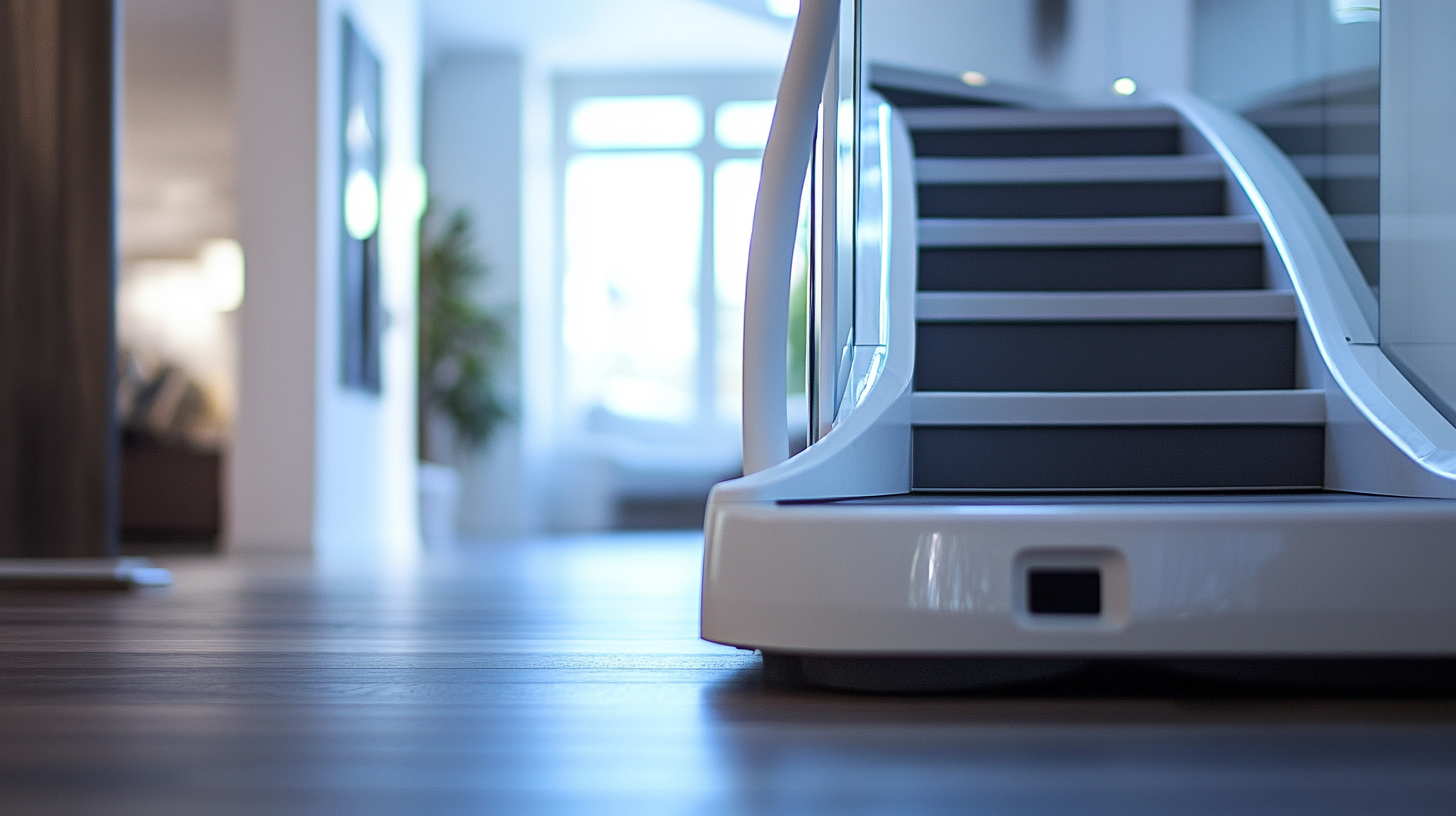
-
Home
-
Products
-
Application
-
Documents
-
News
-
Blog
-
Blog
-
Sinsegye
Leave Your Message
-
Wechat OA

-
 Baijia Hao
Baijia Hao



 Baijia Hao
Baijia Hao

In an increasingly interconnected world, the demand for innovative technologies continues to rise, and Easy Stepper solutions have emerged as a key focus for global buyers. These systems promise enhanced operational efficiency and user-friendly experiences, but the journey to widespread adoption is fraught with challenges. From differing regulatory environments to varying technological infrastructure, the obstacles faced by manufacturers and consumers alike can be significant. Understanding these challenges is essential for stakeholders seeking to capitalize on the potential of Easy Stepper innovations. This exploration will not only highlight the hurdles encountered in the international market but will also provide insights into how companies can navigate these complexities to deliver robust, adaptable solutions that meet the diverse needs of buyers across the globe. As we delve deeper into this topic, we'll uncover the multifaceted nature of the Easy Stepper landscape and the strategies that can help mitigate risks while maximizing the benefits.

Emerging trends in easy stepper technologies are notably transforming the marketplace, driven by advancements in automation and robotics. According to a report by Allied Market Research, the global stepper motor market is projected to reach $4.9 billion by 2027, growing at a CAGR of 5.3% from 2020. This growth is fueled by increased demand from sectors such as food processing, textile manufacturing, and healthcare, where precision and reliability are paramount.
As global buyers seek innovative solutions, companies are focusing on integrating AI and IoT into easy stepper systems. A study from Market Research Future indicates that smart stepper motors will dominate the market, attributed to their enhanced connectivity and real-time monitoring capabilities. These innovations not only improve efficiency but also empower users to optimize their processes, thereby addressing the challenges of scalability and performance. With the shift towards automation, it is crucial for buyers to stay informed of these trends to remain competitive in their respective industries.
This pie chart illustrates the various challenges faced by global buyers in the Easy Stepper technology market. The data highlights the high cost of innovation, market competition, technological challenges, and consumer preferences as significant factors influencing market dynamics.
The global demand for Easy Stepper solutions is increasingly influenced by the expansion seen in various industries driven by technological innovations and evolving consumer preferences. For instance, the global data center market is experiencing a remarkable surge, attributed to escalating needs for robust connectivity and low-latency services, coupled with sustainability initiatives. As companies strive to meet these demands, the adoption of Easy Stepper technologies could play a pivotal role in optimizing operations and enhancing efficiency across data centers.
In parallel, the industrial oils market is projected to grow significantly, with an estimated valuation of around USD 64.3 billion in 2023, and a compound annual growth rate (CAGR) of over 3.4% forecasted through 2032. This growth indicates a robust need for innovative solutions in various sectors, including food, cosmetics, and manufacturing, where Easy Stepper technologies could provide valuable improvements in production processes and product quality. As industries worldwide seek to innovate and maintain competitiveness, the assessment of global demand for Easy Stepper solutions is crucial in harnessing these emerging opportunities.

The adoption of innovative easy stepper technologies presents significant regulatory and compliance challenges for global buyers. According to a recent report by the International Trade Administration, approximately 60% of businesses cite regulatory hurdles as a major barrier in the purchasing process. These challenges can range from varying safety standards in different regions to complex certification processes that can delay market entry.
To navigate these barriers effectively, it is vital for businesses to stay informed about local regulations. Tip: Regularly engage with regional compliance experts who can provide insights into the latest regulatory changes and assist in the certification process. Additionally, leveraging technology such as compliance management software can help streamline the tracking of regulatory requirements, ensuring your product meets necessary guidelines.
Furthermore, the financial impact of non-compliance can be severe, with penalties potentially reaching up to 10% of annual sales, as highlighted by the Compliance & Ethics Institute. Tip: Consider building a robust contingency plan that includes regular compliance audits and a crisis management strategy to handle any potential violations. Investing in thorough compliance checks can save companies tremendous costs and maintain their reputation in the market.

The emergence of easy stepper innovations is reshaping the landscape of motor technologies, particularly in how they compare to more traditional options. Easy steppers, which often leverage advancements in digital interfaces and control systems, present distinct advantages in flexibility and programmability. This is particularly relevant in fields requiring precision, such as medical technology, where innovation can drastically improve adherence to treatment protocols. For instance, recent studies comparing digital tracking methods, like the MyParkinson’s application, highlight the importance of accuracy and compliance in monitoring motor symptoms in patients, echoing a broader trend in seeking technological solutions for improved patient outcomes.
In contrast, traditional motor technologies, such as interior permanent magnet synchronous motors (IPMSMs), while robust and reliable, may lack the adaptability needed to meet the evolving standards of modern applications. As global buyers explore the landscape of easy steppers versus traditional options, the key will be to assess not just the technological capabilities, but also how these systems integrate within existing frameworks. The comparative analysis suggests that while innovations might offer new functionalities, the reliability of traditional systems remains a critical consideration for buyers aiming for long-term success in various applications.
The future of Easy Stepper design is interwoven with innovations and sustainability, addressing the pressing challenges faced by global buyers. As industries increasingly pivot towards environmentally friendly practices, the importance of sustainable materials and designs cannot be overstated. The trend towards transparent wood, for instance, illustrates how advanced materials are redefining both technology and building practices, offering stronger, more durable alternatives to traditional plastics and glass. Such innovations not only contribute to performance but also align with the global imperative for sustainable development.
Moreover, the automotive industry is witnessing similar shifts, with an emphasis on the essential role of components like cylinder sleeves that enhance engine performance and longevity. Innovations in this sector are motivated by the need for greener solutions, echoing the broader trends in manufacturing and materials development. As forums and conferences explore future materials and their applications, the Easy Stepper industry can draw valuable insights, fostering designs that effectively balance functionality with ecological responsibility. Setting a precedent in sustainable design will be crucial for meeting both market demands and the 2030 Agenda for Sustainable Development.